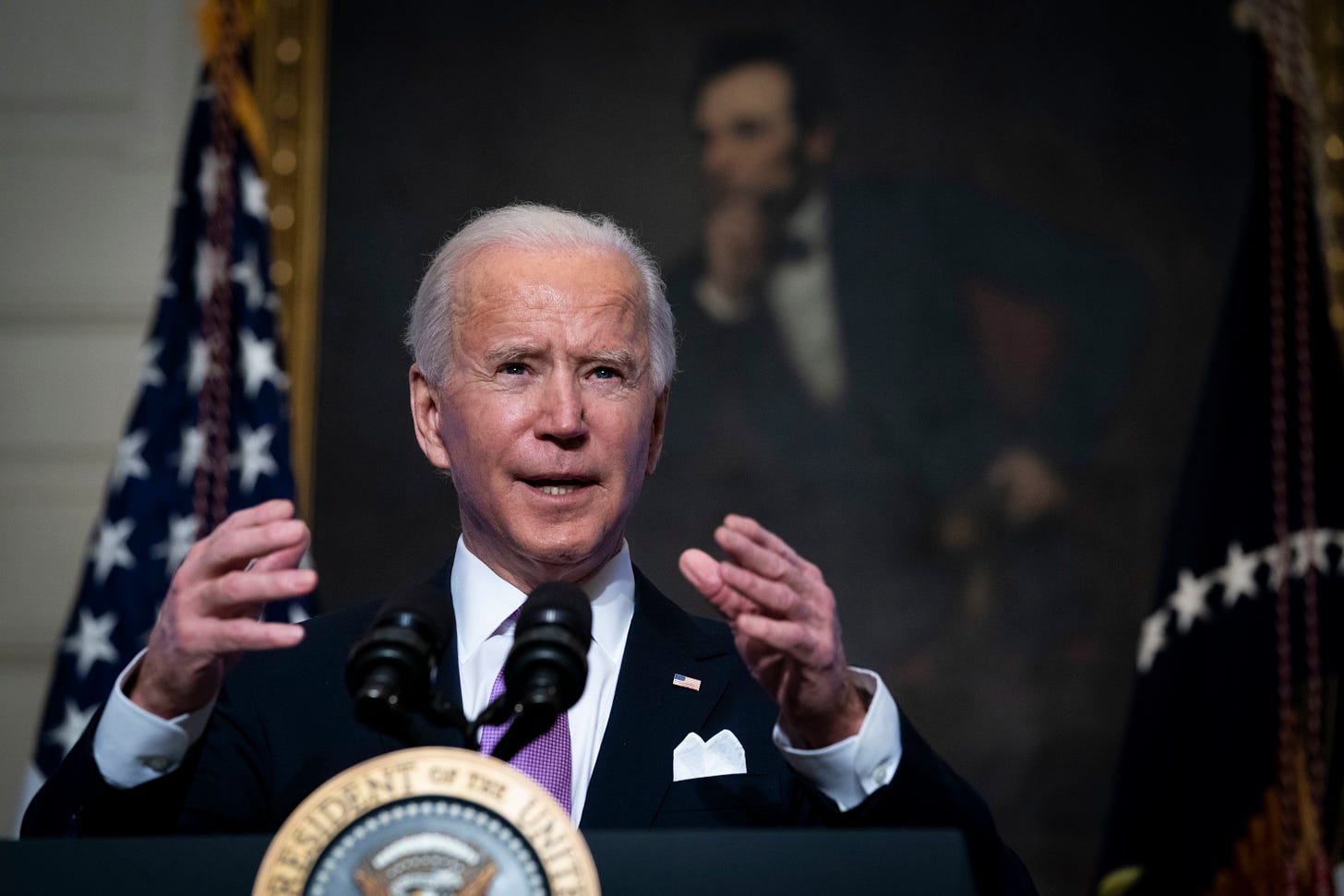How to Make Biden's American Rescue Plan Better
The problem isn’t the size of the stimulus. It’s optimizing the dollars we’re spending.

While support for an additional round of COVID-19 relief remains widespread, the prospects for the Biden administration’s "American Rescue Plan" in Congress, at least in its current form, do not seem not particularly rosy.
The nature of the opposition to it—heavily focused on the proposal's $1.9 trillion size—is misguided. While a smaller or different bill may be preferable in a macroeconomic sense, the risks of undershooting are probably greater than those of overshooting.
Opponents of the plan are worried about two risks: inflationary pressures and fiscal sustainability.
As far as inflation is concerned, the economy is running at well below the Federal Reserve’s 2 percent target, and has been for some time. If inflation were to appear, the Fed can raise interest rates from their historically low level.
On the debt, we can always claw money back through additional taxation at a later date—once the COVID crisis has receded. In the meantime, the demand for Treasury bonds remains very strong.
This isn’t to say that inflation and debt are irrational concerns. In a perfect world we would couple more spending now with significant medium-term fiscal reform. That would help us avoid unnecessary suffering and the destruction of the personal finances of millions of households and entrepreneurs, while ensuring sustainable public finances down the line. And there are many options for serious medium-term fiscal reform.
These range from changes to Social Security as proposed by Andrew Biggs, to the introduction of a carbon tax—or a value-added or consumption tax—as Bill Gale and my colleague Alan Viard have outlined in detail, or even to prefunding Medicare, Social Security, and unemployment insurance à la Feldstein.
The more pressing concern about the American Rescue Plan isn’t its size per se, but its composition.
Sending out checks to the overwhelming majority of households at a cost of almost $500 billion may be a political necessity in order to secure passage. But practically any other allocation of that money would be more effective in providing relief, as John Friedman and his co-authors have shown by tracking in real time how people have used previous stimulus payments.
The current proposal also includes an incredible amount of money for state and local governments—over $500 billion if you include money for schools. I've been supportive of this kind of transfers. But current state and local needs are actually smaller than that, as my co-authors and I have previously outlined. The amount of money allocated for K-12 schools, $170 billion, in particular seems hard to justify: It is unlikely that any amount of spending will COVID-proof the schools to the satisfaction of the most intransigent teacher unions. This money would be better spent on remedial classes during the summer or next year to help the students hardest hit by school closures.
And there are some elements to the American Rescue Plan that seem orthogonal to the kind of relief households and firms need right now. For example: The dramatic expansion of the child tax credit, worth $120 billion, would simply implement pre-existing social policy priorities.
While I understand that Democrats are committed to raising the minimum wage, they should worry about repeating the experience of the Great Recession. Minimum wage increases legislated during the Bush administration kicked in just as the economy was going through a deep downturn, and these caused significant job loss at the worst possible moment (as Jeffrey Clemens and Michael Wither have demonstrated).
Other components of the proposal are smart and helpful. Expanded and extended unemployment benefits are a reasonable way to help households that have suffered income losses bridge what are—hopefully—the last few months of reduced economic activity due to the pandemic. In this moment it seems impossible to overspend on public health generally—and vaccine production and distribution specifically. Anything that brings the end of the public-health crisis closer will pay for itself.
What might replace the less helpful components of the proposal? Additional Paycheck Protection Program funds for firms in the most affected industries could ensure that we have a supply side ready to go later this year. And a mess inevitably awaits us in the housing market once various moratoria on evictions and payments expire: More money to help smooth out that transition might come in handy.
But it is hard to see how these kinds of reasonable relief measures would add up to almost two trillion dollars in spending.
It would be helpful to everyone—including voters, the economy, and the Biden administration—if opponents of the American Rescue Plan focused on the micro rather than the macro.









